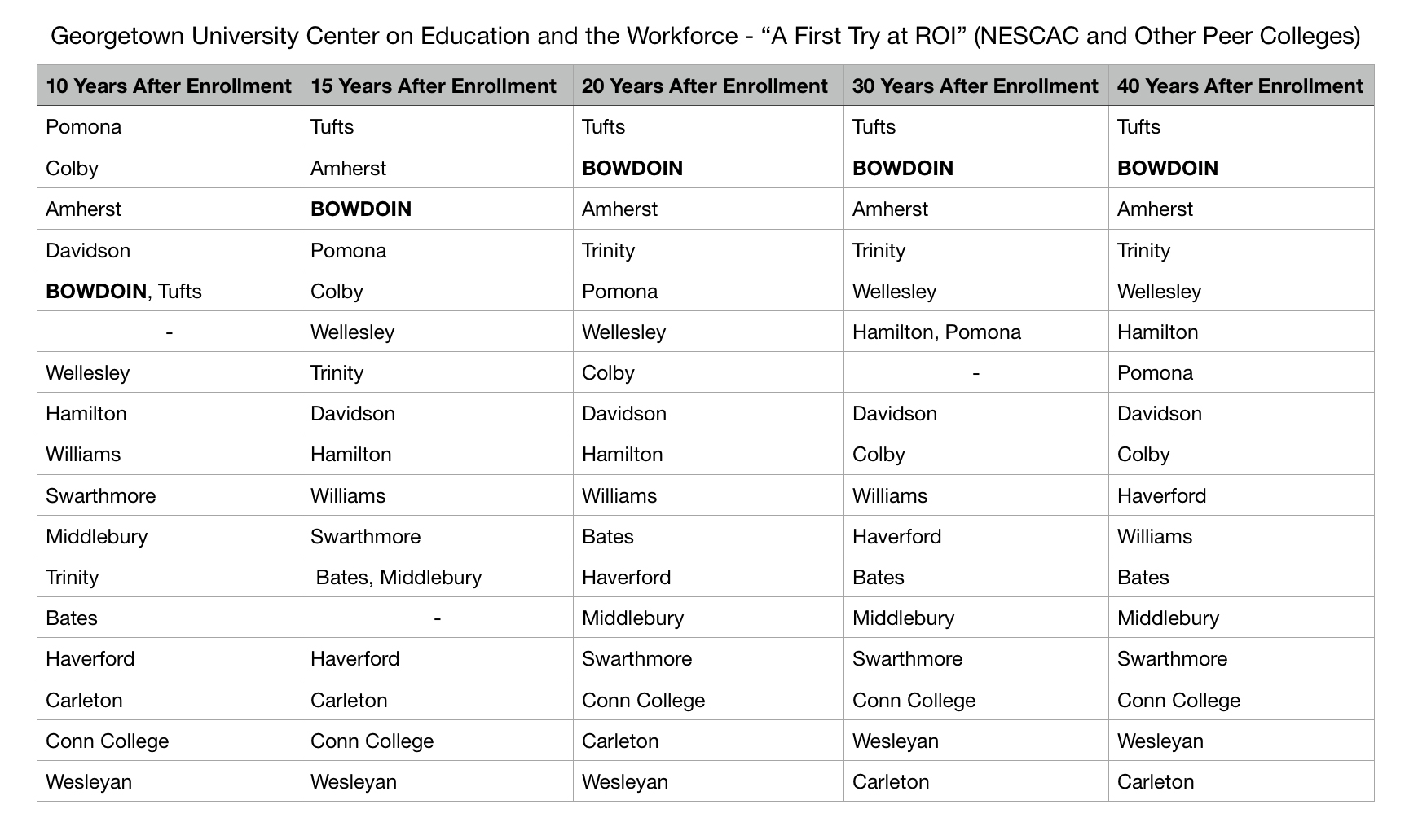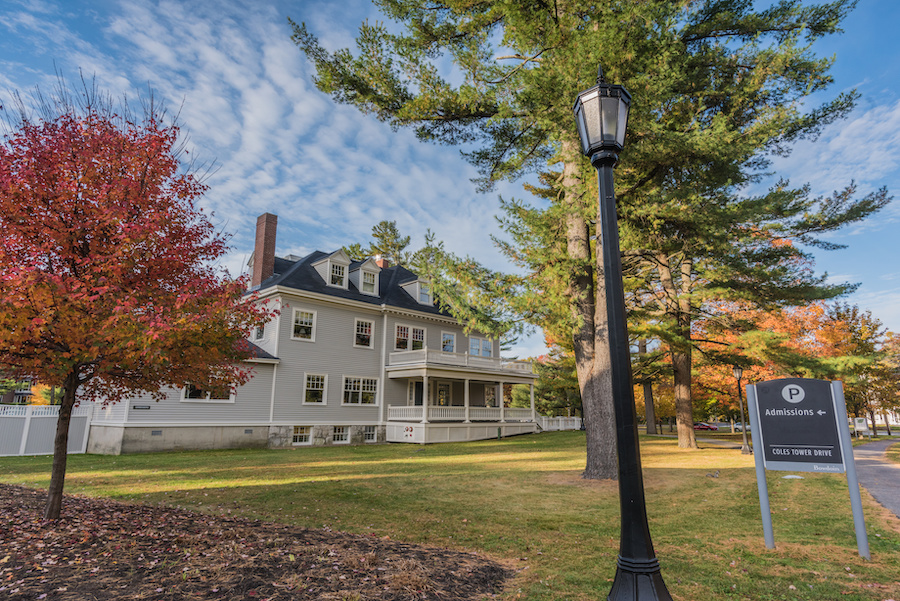Bowdoin Among NESCAC and Other Peer Colleges Providing High Financial Returns in Years After Enrollment
By Bowdoin NewsBachelor’s degrees from Bowdoin are among those from private colleges proven to have the highest financial returns on investment forty years after enrollment, finds a new report from the Georgetown University Center on Education and the Workforce (CEW).
Bachelor’s degrees from Bowdoin are among those from private colleges proven to have the highest financial returns on investment forty years after enrollment, finds a new report from the Georgetown University Center on Education and the Workforce (CEW).
In attempting to answer whether college is “worth it,” the study, A First Try at ROI: Ranking 4,500 Colleges, finds that the type of institution—private versus public—makes a significant difference in overall financial return on investment.
It concludes that degrees from private nonprofit colleges typically have a higher financial return on investment than public colleges when measured in the long term.
A degree from a private nonprofit college is said to be worth $8,000 more annually ten years after enrollment—even though, as CEW points out, students, on average, take out more than twice as much in loans to attend private colleges. Bowdoin, which is need blind, replaced loans with grants in 2007. Nearly half of the College’s enrolled students receive aid, with the average grant totaling just over $47,500.
Over the course of forty years, the report finds that the average graduate of a private college has a net economic gain of $838,000, even after paying off higher amounts of debt, compared to $765,000 for a graduate of a public college.
Data from the survey shows Bowdoin among the top five NESCAC and other peer liberal arts colleges for financial return on investment at ten years after enrollment and among the top two or three in the same group for the 15-, 20-, 30-, and 40-year benchmarks. CEW’s findings put the net present value of a Bowdoin education forty years out at $1,350,000.

The report uses expanded College Scorecard data to calculate the net present value of a credential from 4,500 colleges, including traditional two-year and four-year public and private colleges, as well as for-profit colleges and training academies. CEW also developed an online table of the 4,500 colleges that allows users to sort data on tuition, median student debt, and median earnings for each institution.
The Georgetown University Center on Education and the Workforce is an independent, nonprofit research and policy institute that studies the link between individual goals, education and training curricula, and career pathways.



